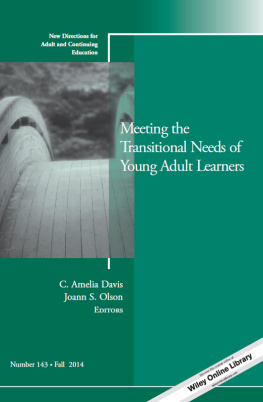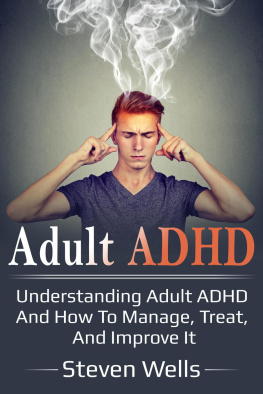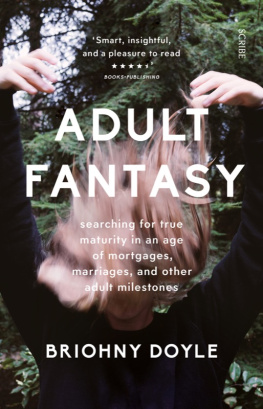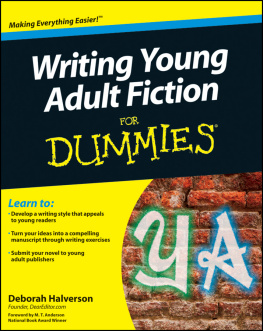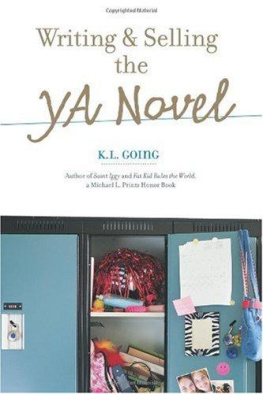
Meeting the Transitional Needs of Young Adult Learners
C. Amelia Davis, Joann S. Olson (eds)
New Directions for Adult and Continuing Education, no. 143
Susan Imel, Jovita M. Ross-Gordon, CoeditorsinChief
2014 Wiley Periodicals, Inc., A Wiley Company. All rights reserved. No part of this publication may be reproduced, stored in a retrieval system, or transmitted in any form or by any means, electronic, mechanical, photocopying, recording, scanning, or otherwise, except as permitted under Section 107 or 108 of the 1976 United States Copyright Act, without either the prior written permission of the Publisher or authorization through payment of the appropriate per-copy fee to the Copyright Clearance Center, 222 Rosewood Drive, Danvers, MA 01923, (978) 750-8400, fax (978) 646-8600. The copyright notice appearing at the bottom of the first page of an article in this journal indicates the copyright holder's consent that copies may be made for personal or internal use, or for personal or internal use of specific clients, on the condition that the copier pay for copying beyond that permitted by law. This consent does not extend to other kinds of copying, such as copying for distribution, for advertising or promotional purposes, for creating collective works, or for resale. Such permission requests and other permission inquiries should be addressed to the Permissions Department, c/o John Wiley & Sons, Inc., 111 River Street, Hoboken, NJ 07030; (201) 748-6011, fax (201) 748-6008, www.wiley.com/go/permissions.
Microfilm copies of issues and articles are available in 16mm and 35mm, as well as microfiche in 105mm, through University Microfilms Inc., 300 North Zeeb Road, Ann Arbor, Michigan 48106-1346.
New Directions for Adult and Continuing Education (ISSN 1052-2891, electronic ISSN 1536-0717) is part of The Jossey-Bass Higher and Adult Education Series and is published quarterly by Wiley Subscription Services, Inc., A Wiley Company, at Jossey-Bass, One Montgomery Street, Suite 1200, San Francisco, CA 94104-4594. POSTMASTER: Send address changes to New Directions for Adult and Continuing Education, Jossey-Bass, One Montgomery Street, Suite 1200, San Francisco, CA 94104-4594.
New Directions for Adult and Continuing Education is indexed in CIJE: Current Index to Journals in Education (ERIC); Contents Pages in Education (T&F); ERIC Database (Education Resources Information Center); Higher Education Abstracts (Claremont Graduate University); and Sociological Abstracts (CSA/CIG).
Individual subscription rate (in USD): $89 per year US/Can/Mex, $113 rest of world; institutional subscription rate: $311 US, $351 Can/Mex, $385 rest of world. Single copy rate: $29. Electronic onlyall regions: $89 individual, $311 institutional; Print & ElectronicUS: $98 individual, $357 institutional; Print & ElectronicCanada/Mexico: $98 individual, $397 institutional; Print & ElectronicRest of World: $122 individual, $431 institutional.
Editorial correspondence should be sent to the Coeditors-in-Chief, Susan Imel, 3076 Woodbine Place, Columbus, Ohio 43202-1341, e-mail: ; or Jovita M. Ross-Gordon, Southwest Texas State University, CLAS Dept., 601 University Drive, San Marcos, TX 78666.
Cover photograph by Jack
www.josseybass.com
Editors Notes
The word transition conveys movement, leaving one thing behind and becoming something else. The caterpillar becomes a butterfly after metamorphosis. With a twist of the wrist, the image at the end of the kaleidoscope changes. For many, graduation from high school seemingly marks the transition from student to something else. Transition begets change, and something new emerges.
And yet, even these examples suggest that looking closely at any particular transition reveals it as more complex than it first seemed. If the caterpillar has two states of beingcaterpillar and butterflythen what is to be made of the time in the chrysalis? The kaleidoscope can produce a seemingly infinite number of patterns. And new graduates are often surprised to discover just how much they still don't know. Transitions often do not have clearly defined beginnings or endings, and they can be disruptive. Given the comprehensive nature of many of life's transitions, what is the role of the educator in helping others navigate transition? More precisely to the point of this volume: What are the transitional and educational needs of young adults as they transition to adulthood?
There has not been a New Directions for Adult and Continuing Education sourcebook related to young adult learners since Darkenwald and Knox (1984) edited Meeting Educational Needs of Young Adults. As the editors stated then, young adults are an important segment of the adult population but have received scant attention in the adult education literature.
Increasingly, youths and young adults are enrolling in adult education programs and in doing so are changing the meaning of adulthood. Given the significant demographic, technological, and cultural shifts during the past 30 years, there is an increasing need for practitioners and program planners to reconsider what constitutes adult and adult education. An understanding of the changing meaning of adulthood is fundamental to developing programs and policies that will address the needs of younger learners, and we believe it is time for an updated discussion among adult educators and scholars in other disciplines. This volume is designed to reignite the discussion related to meeting the educational needs of young adults along with a timely and interdisciplinary discussion that highlights the transitional needs of young adult learners.
In Chapter 1 of this volume, Johanna Wyn challenges a simplistic understanding of transition and adulthood. She suggests that a focus on transition is steeped in linear theories of psychology and human development that rely on normativeand perhaps outdatedunderstandings of the markers of adulthood. As an alternative, she proposes that a metaphor of belonging, rather than transition, more accurately describes this time of life, as young adults understand their present reality and begin to conceptualize their future possibilities in the context of the quality of their relationships and connections.
Brendaly Drayton explores the intersection of cultural identity, social conditions, and the transition to adulthood in Chapter 2. Using a critical sociocultural perspective, she illustrates how culture orients developmental tasks and learning for emerging adults from dominant and minority cultures. Strategies for developing cultural competency and implications for adult education are discussed.
The transitional needs of vulnerable youth are highlighted by Rongbing Xie, Bisakha (Pia) Sen, and E. Michael Foster in Chapter 3. For many of these vulnerable youth, their relationship with the systems they have engaged with or relied onmental health and social service agencies, the foster care system, or criminal justice systemsends abruptly when they reach the age of majority. Xie et al. explore the impact of those individual histories on the process and experience of transitioning to adulthood.
Chapter 4, written by Jessica Nina Lester, focuses on how youth with dis/ability labels navigate the meaning and markers of adulthood. She outlines several of the policies designed to support these young adults, while at the same time suggesting that little research has been conducted related to how individuals, educators, and employers have responded to these policies and mandates. Furthermore, she explores the implications of reframing dis/ability labels as a social construct, suggesting that this approach may help adult educators who wish to support young adults with dis/ability labels in a meaningful way.
Next page
